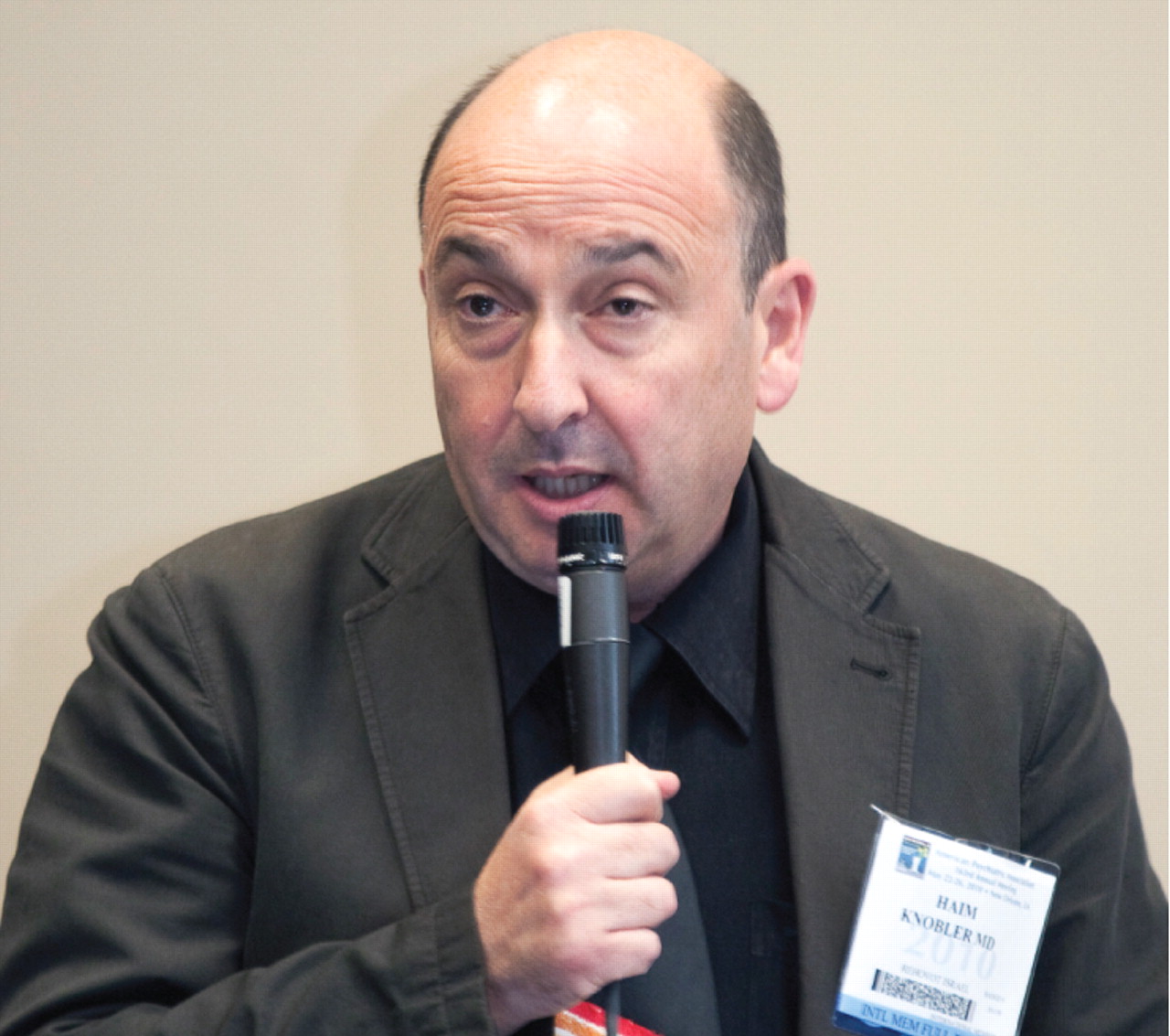Israeli Military Helps Medics Cope With Combat Stress
Abstract
Combat medical teams experience both the general risks of combat and the added burden of dealing with badly wounded comrades and are thus at special risk for post-traumatic stress disorder (PTSD) and other combat-related stress problems, said Haim Knobler, M.D., a lecturer in psychiatry at the Hadassah Medical School at the Hebrew University in Jerusalem. Knobler, who is a former head of the Israel Defense Forces (IDF), spoke at APA's 2010 annual meeting in New Orleans in May.

Structured after-action discussions among members of combat medical teams may lessen acute and long-term stress reactions, says Haim Knobler, M.D., former head of the Israel Defense Forces' mental health department.
The IDF has developed guidelines intended to enhance coping ability and reduce the chances of negative stress reactions in these field medical units, said Knobler.
Outcome data on the program are not available for several reasons, he told Psychiatric News. Since all medical personnel operate under the same guidelines, there is no control group, rendering a true clinical trial impossible. Also, closer attention paid to early combat stress reactions might result in identifying more acute cases in the short run, compared to previous stratagems. Early identification and treatment should then reduce numbers of chronic cases observed years later.
Primary prevention of stress reactions begins even before entry into the army, said Knobler.
Exhaustive preinduction physical, cognitive, behavioral, and personality testing at age 16 or 17 helps determine assignment of recruits to military specialties. Tests cover social functioning, individual autonomy, and organizational abilities. (The original version of the psychological tests was designed in the mid-1950s by Daniel Kahnemann, who won a Nobel Prize for economics in 2002.)
The recruits also provide psychiatric histories and some family medical history. When the tester suspects any psychological disorder, the subject is referred for evaluation. “This testing is strongly predictive of success and failure in front-line services,” said Knobler.
Secondary Prevention Also Addressed
While this screening process may help select the best candidates for high-stress jobs such as combat medics, it cannot entirely prevent stress or PTSD. Hence, the IDF also has guidelines for secondary prevention, employed immediately following an episode of combat.
The guidelines mandate comprehensive professional field medical training for unit members, including studying combat-induced PTSD and its treatment. Unit drills include simulated but stressful traumatic events.
A second element of the preventive strategy involves a structured post-action meeting with the medical team. The unit gathering is not designed as a psychological intervention and is specifically not “critical incident stress debriefing,” because it is not focused on trauma, said Knobler. The context is a routine postcombat debriefing, held by all military units to determine what happened during an operation and what can be learned from it. The unit maintains its command structure and cohesion.
“But it is more than that,” said Knobler. “It also serves as part of a preventive strategy.”
Meeting Held When Fight Ends
The session is held after any event in which unit members treat combat injuries. The meeting lasts 30 to 60 minutes and is held minutes to hours after the fighting ends, close to the unit's location but in a tent or room to isolate the team members. If the fighting occurred at night, the unit gathers the morning after.
The session is divided into four parts. The first clarifies the goals of the debriefing and rules for the discussion. The unit's commanding officer, usually a physician, leads the discussion, but a mental health professional is present.
Next, the discussion section of the meeting clarifies the circumstances of the event. The unit leader asks team members what injuries they saw and how they were treated. The leader also asks if this was the first time the medic has seen the injury described. Medics are asked about their feelings but not to elaborate on their emotional reactions.
“The personal experience of each man is different,” said Knobler. “So collecting their stories gets them closer to a comprehensive view of the operation.”
Participation Not Optional
Every participant must take part. A soldier can't just agree with what a previous speaker has said and leave it at that.
“Everyone must express his own views,” he said. “We do not tolerate silence.”
No accusatory or critical language is permitted. If a person admits a mistake, he is not criticized, but the discussion leader tries to elicit the proper treatment procedures to be used in the future.
All participants have their say, and then the unit's commanding officer summarizes his view of the action.
The third stage is the “gathering of strength,” said Knobler. The leader offers some positive reinforcement to each soldier and opens the floor to questions. Officers or mental health personnel at this session observe team members who might be at risk for stress reactions or exhibiting “call for help behavior” and invite them to participate in further individual interventions.
The final part of the meeting sums up the lessons learned and concentrates on preparing for the next period of activity.
This postcombat discussion is just one part of a more comprehensive program that educates medical corps personnel about acute stress reactions and PTSD; screens soldiers for symptoms; and offers early treatment by a psychiatrist, psychologist, or social worker when needed.
Similar postevent, structured group discussions might well be adaptable for other military or emergency service workers who face stressful tasks in their professional lives, said Knobler. 



